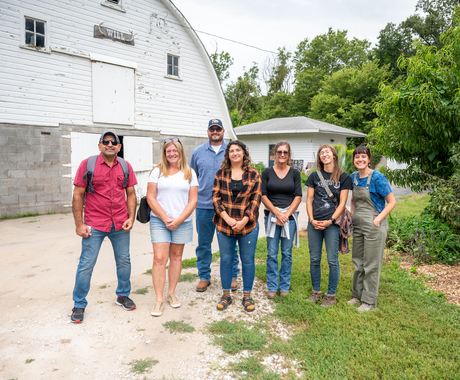Lyons, Nebraska - Today, the Center for Rural Affairs along with Mike Duffy, Professor Emeritus of Economics, Iowa State University, released a report that explores the impact subsidized crop insurance places on land values.
“My greatest concerns are whether unlimited crop insurance subsidies interfere with smaller farmers and beginning farmers getting access to land affordably. And whether the way in which crop insurance programs work undermine our nation’s collective efforts to conserve our soil and water. I’ve seen and heard about things happening with crop insurance here in the Midwest for years that make me believe those concerns are well-founded.”
Bill Furlong, farmers, Iowa City, Iowa
“Farmers have told us the program was helping mega-farmers outbid beginning, and small and mid-sized farmers on farmland, putting upward pressure on land values,” explained Traci Bruckner, Senior Policy Associate with the Center for Rural Affairs explained. “We decided to investigate. And to explore the impact subsidized crop insurance places on land values, we worked with Mike Duffy, Professor Emeritus of Economics, Iowa State University.”
Duffy’s research shows that subsidized crop insurance indeed has an impact on land values. He identifies a couple of ways the program impacts land values.
The first is subsidization of the insurance premium. Duffy points out that the premium farmers pay is not the actuarially sound premium. Rather, it is the premium minus a subsidy from the government. That premium subsidy is a benefit the farmer receives.
Second, crop insurance reduces the income risk associated with crop production, either through loss of revenue or crop failure. This risk reduction adds value because future returns are not as uncertain as they would be without crop insurance.
Duffy used data available from the USDA Risk Management Agency (RMA) to examine if federal crop insurance programs influence land values by the amount of the subsidy and the reduction in risk. The RMA provides detailed summaries of their business for the nation, by crop, by state, and by year going back to 1989. For this study, he used Iowa as the example.
A full copy of the report can be viewed and downloaded at:
“These findings demonstrate that subsidies have value to producers, and some of those subsidies get bid into land costs. When those subsidies also serve to reduce risk, they have an even greater value than the subsidy alone,” explained Bruckner.
“While we agree that federal crop insurance is an important tool in the risk management toolbox, we can recognize it drives up production costs by increasing the cost of land,” added Bruckner. “The net effect is to prop up the nation’s largest and wealthiest farms, often at the expense of smaller farms.”
The full report also examines the impact crop insurance subsidies have on cash rental rates.
“We intend to use this analysis to further our efforts to come up with policy reforms that will ensure federal crop insurance programs work in the best interest of small and mid-sized family farms,” concluded Bruckner. “These are the people that those who oppose reform often suggest the program is designed to benefit. We beg to differ. And we know that the nation needs reform that targets the root of the problems created by unlimited crop insurance premium subsidies.”




